I’ve walked on a lot of floors in my life, but nothing beats the timeless charm of Bruce hardwood flooring. It’s like slipping into your favorite pair of jeans—comfortable, reliable, and effortlessly stylish.
Whether you’re sprucing up your home or building from scratch, Bruce offers a blend of durability, beauty, and affordability that’s hard to match. Trust me, I’ve been there, agonizing over flooring choices, and Bruce won my heart.
You’ll see why as I share my journey, break down the pros and cons, and compare it to other brands. Ready to fall in love with your floors? Let’s get started.
My Journey With Bruce Hardwood Flooring
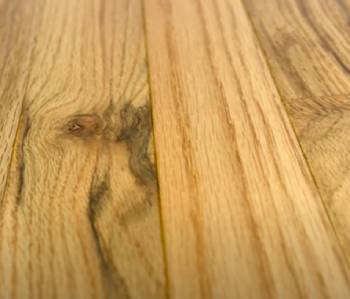
When my husband and I bought our fixer-upper in the suburbs, the floors were a disaster—think 90s linoleum meets questionable carpet stains.
We knew hardwood was the way to go for that warm, inviting vibe we craved.
After weeks of research, we landed on Bruce hardwood flooring, specifically their Red Oak Gunstock from the solid hardwood collection.
Why Bruce? It was a mix of their century-long reputation, the price point (around $4 per square foot), and the fact that I could find it at our local Home Depot.
Installing it was an adventure. We went the DIY route to save some cash, and let me tell you, it wasn’t all smooth sailing. The boards were mostly straight, but we had a few that were slightly bowed, which made us curse under our breath as we wrestled them into place.
Still, once we got the hang of it, the click of each plank locking together felt like a small victory. The prefinished aluminum oxide coating meant no sanding or staining for us—just lay it down and enjoy. Our living room transformed overnight from a dated mess to a cozy, classic space that made me smile every time I walked in.
Living with Bruce floors for the past three years has been a revelation. They’ve held up to our chaotic household—two kids, a clumsy dog, and my habit of dropping coffee mugs. The scratches are minimal, and the rich, reddish hue of the Gunstock oak still pops like it did on day one.
I’ve even installed their Hydropel engineered hickory in our kitchen, and it’s been a game-changer for handling spills (because, kids). My only gripe? Some boards from the big-box store had more knots than I’d like, but honestly, it adds character.
Bruce has made our home feel like ours, and I’m excited to share why it might be the perfect fit for you, too.
The Pros of Bruce Hardwood Flooring
- Unmatched Variety to Suit Your Style
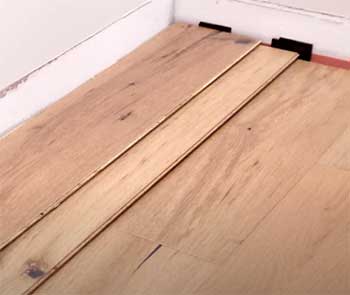
You’ve got options with Bruce, and I mean options.
With over 300 styles across their solid and engineered hardwood lines, you can find something that screams “you.”
I fell for the warm, traditional Red Oak Gunstock, but they’ve got everything from sleek maple to rustic hickory.
Want a hand-scraped frontier hickory for that farmhouse vibe? They’ve got it.
Prefer a modern, wide-plank white oak? Check. Their colors range from creamy beiges to deep, moody browns, so whether your home is a cozy cabin or a minimalist loft, Bruce has a floor that fits. I spent hours browsing their site, and it was like a candy store for design nerds like me.
- Durability That Takes a Beating
Let’s talk toughness. Bruce floors are built to last, especially their hickory options, which boast a Janka hardness rating of 1,820—way tougher than maple (1,450) or white oak (1,360). In my house, where my dog thinks the living room is a racetrack, this durability is a lifesaver.
The aluminum oxide finish on their prefinished floors laughs in the face of dog paws and toy trucks. I’ve dropped heavy pots in the kitchen, and while I held my breath, the Hydropel hickory barely flinched. Even after three years, the floors look nearly new, with only a few character-building scratches.
- Affordability That Won’t Break the Bank
Bruce is the “working man’s wood,” as one reviewer put it, and I couldn’t agree more. Their solid hardwood starts around $4 per square foot, and engineered options can dip even lower. Compared to premium brands like Carlisle, which can hit $8.50 per square foot, Bruce feels like a steal.
For our 1,200-square-foot main floor, we spent about $5,000, including installation materials. That’s a fraction of what we’d pay for exotic woods or custom finishes, yet the quality doesn’t feel compromised. If you’re on a budget but want real hardwood, Bruce is your friend.
- Made in the USA with Eco-Friendly Vibes
I’m a sucker for products with a story, and Bruce’s got a good one. Sourced from the Appalachian Mountains, their domestic woods like oak, hickory, and maple are harvested and manufactured in the U.S. This isn’t just patriotic—it means consistent quality and a smaller carbon footprint.
They’ve got FloorScore certification, which is a nod to eco-friendliness, though I wish they had more certifications like some competitors. Still, knowing my floors come from sustainable practices makes me feel a little better about my home’s environmental impact.
- Innovative Features Like Hydropel
Bruce’s Hydropel technology is a game-changer, especially for spill-prone areas like kitchens or bathrooms. I installed their Hydropel hickory in our kitchen, and it’s rated to withstand 36 hours of standing water.
When my toddler dumped a full sippy cup of juice, I didn’t panic—just wiped it up, and the floor was fine. The six-layer waterproof protection is no joke, and it’s something you won’t find in most solid hardwoods. Even their Densitek core in engineered floors adds 33% more dent resistance than standard plywood cores, which is perfect for clumsy folks like me.
- Easy Installation for DIY Enthusiasts
If you’re handy like me, you’ll appreciate Bruce’s milling precision. Their boards are cut to fit tightly, reducing gaps and making installation smoother. We used the nail-down method for our solid oak, and while it took some elbow grease, the boards aligned beautifully.
For engineered options, the click-lock system is a breeze—our kitchen floor went in over a weekend. Just be warned: check each box for warped boards, as we had a few duds. But overall, Bruce makes DIY doable, saving you hundreds on professional installation.
The Not-So-Good Parts of Bruce Hardwood Flooring
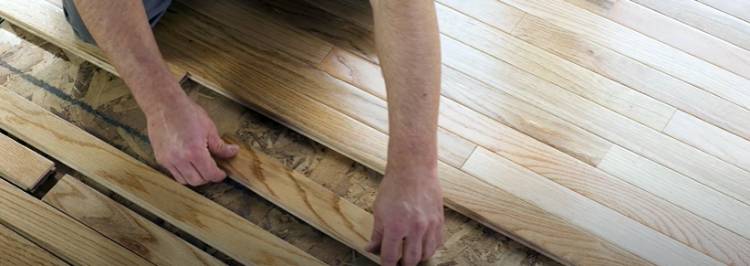
- Quality Control Can Be Spotty
I hate to say it, but Bruce isn’t perfect. My experience was mostly positive, but I’ve read horror stories about quality control, especially with big-box store purchases. Some folks report warped, bowed, or mismatched boards—think 20-30% of a box being unusable.
We had a few wonky planks in our order, which slowed us down during installation. It’s not a dealbreaker, but if you’re buying from Home Depot or Lowe’s, inspect every box before you start. Local flooring stores might offer better-graded stock, but it’s pricier.
- Limited Exotic Wood Options
If you’re dreaming of Brazilian cherry or teak, Bruce might disappoint. They stick to domestic species like oak, hickory, maple, and walnut, which keeps costs down but limits your palette.
I love the classic look of their Red Oak, but if you’re after something exotic or ultra-modern, brands like Wicanders or Cali Bamboo offer more variety. Bruce’s focus on traditional styles means you might not find the bold, unique look you’re craving for a contemporary space.
- Warranty Woes
Bruce’s warranties sound great—25 to 50 years for some solid hardwoods, 15 for others—but the fine print can bite. Some customers complain that Bruce doesn’t always honor claims, especially for moisture-related issues or finish wear.
One reviewer mentioned cracks in their Red Oak floor, and Bruce blamed high humidity, voiding the warranty. I haven’t had to test their warranty yet (knock on wood), but it’s worth keeping humidity between 35-55% to avoid headaches. Compared to Shaw’s more flexible warranties, Bruce’s can feel restrictive.
- Big-Box Store Quality Concerns
Buying Bruce from big-box stores like Home Depot or Lowe’s is convenient, but it comes with a catch. Some installers claim these retailers get lower-grade stock with more knots, shorts, or milling issues.
My Gunstock oak had a few knotty pieces that I didn’t mind, but if you’re picky, this could bug you. One Reddit user described their new Bruce planks as “snake-like” with missing tongues and grooves. Specialty flooring stores might offer higher-grade options, but you’ll pay a premium. It’s a trade-off for the budget-friendly price.
- Noise Factor
Hardwood floors aren’t quiet, and Bruce is no exception. Our floors creak a bit in high-traffic areas, especially where the subfloor wasn’t perfectly level. It’s not a constant issue, but if you’re sensitive to noise, you’ll need a solid underlayment and a level subfloor.
One installer I spoke to mentioned that proper installation is key to minimizing creaks, but it’s something to consider if you’re used to the muffled comfort of carpet.
Maintenance Tips For Keeping Your Bruce Floors Gorgeous
- Sweep and Vacuum Like It’s Your Job: I learned early on that dust and dirt are the enemy of hardwood floors. My Bruce floors show every speck, especially in sunlight. I sweep daily with a soft-bristle broom and vacuum weekly with a hardwood-safe attachment. It takes five minutes and keeps scratches at bay. Pro tip: skip the beater bar on your vacuum—it’s too harsh. If you’re lazy like I can be, a robotic vacuum is a lifesaver for quick cleanups between deep cleans.
- Use the Right Cleaning Products: Don’t grab just any cleaner from under the sink—Bruce floors need specific love. I use Bruce’s own hardwood cleaner, which is a simple spray-and-mop solution. It’s gentle and doesn’t leave a residue. A mix of vinegar and water works in a pinch, but go easy—too much liquid can seep into seams and cause trouble. I mop every two weeks, focusing on high-traffic areas like the entryway. Always use a microfiber mop; it grabs dirt without scratching.
- Polish for Extra Shine: Every three to four years, give your floors a polish to restore their glow. I used a urethane-based polish on my solid oak, and it was like hitting the refresh button—the finish looked brand new. Apply it sparingly with a clean cloth, following the grain. It’s a weekend project, but it protects against scratches and wear. For my Hydropel hickory, I skip polish since the waterproof finish is already so tough, but check your floor’s specs first.
- Control Humidity Like a Pro: Hardwood and moisture don’t mix, and Bruce is no exception. I keep our home’s humidity between 35-55% with a humidifier in winter and a dehumidifier in summer. A cheap hygrometer helps me monitor levels. After a humid summer, I noticed slight cupping in one corner, but it settled once I adjusted the humidity. If you live in a humid climate, engineered options like Hydropel are your best bet for resisting moisture damage.
- Refinishing for a Fresh Start: One of the perks of Bruce’s solid hardwood is that you can refinish it multiple times—up to four or six, depending on the thickness. I haven’t tackled this yet, but I’m planning to sand and restain our living room floor in a few years to change the vibe. It’s a DIY-friendly process: sand off the old finish, apply a new stain, and seal it with polyurethane. Engineered floors can’t be refinished as often, but their durability means you won’t need to for years.
- Protect Against Scratches: My dog’s nails and my kids’ toys are constant threats, but I’ve got tricks to minimize scratches. Felt pads under furniture legs are a must—trust me, dragging a chair without them is a recipe for disaster. I also use area rugs in high-traffic spots like the hallway. If you’re worried about scratches showing, go for lighter stains or oak’s grainy texture, which hides imperfections better than smooth maple. And tell your guests to ditch the stilettos indoors!
How Bruce Stacks Up Against Other Brands?
To truly understand where Bruce fits in the vast world of flooring, you have to see it in context. While my own experience was with Bruce, my research led me to compare it directly with other brands that homeowners are buzzing about.
Each one serves a different type of person, a different priority, and a different vision for their home.
Bruce Vs. Gaia Flooring: The Traditionalist Meets the Eco-Innovator
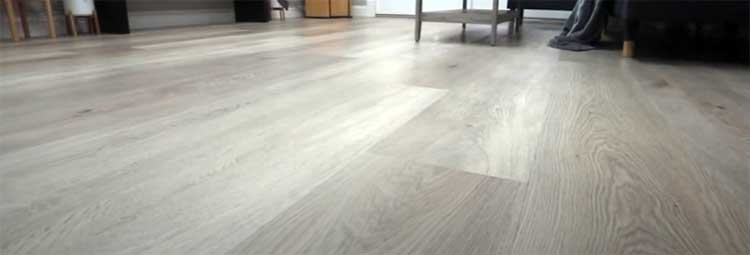
This comparison is less about apples-to-apples and more about choosing the right tool for the job. It highlights the fundamental choice between real, traditional hardwood and modern, high-performance composite flooring.
- The Core Material: This is the biggest differentiator. Bruce, in its most classic form, is real wood—either solid oak, hickory, or maple that’s been harvested and milled. It has the authentic feel, smell, and character of wood because it is wood. Gaia Flooring, on the other hand, specializes in Rigid Core SPC (Stone Polymer Composite) flooring. It’s a man-made product crafted from limestone powder and stabilizers to create an incredibly dense and durable core, topped with a high-definition decorative layer that mimics the look of wood. Bruce offers real wood’s warmth and the ability to be refinished (if it’s solid), but it’s susceptible to water damage and dents. Gaia is 100% waterproof, making it a star performer in kitchens, basements, and bathrooms where you’d never dream of putting solid hardwood.
- Aesthetic and Feel: When I held a sample of my Bruce solid oak, it had a substantial, organic heft. The grain was unique to that specific plank. It feels warm and slightly soft underfoot. Gaia’s flooring is engineered for perfection. The visual layer is a highly realistic photograph of wood, so you can get a very consistent, clean look without the knots or color variations I found in my Bruce boxes. Underfoot, Gaia feels harder and more solid due to its stone-based core, and it won’t feel as warm to the touch. The choice here is between authentic, imperfect character (Bruce) and flawless, waterproof performance (Gaia).
- The Eco Angle: Gaia puts sustainability at the forefront of its marketing. Their products are often made with recycled materials and are FloorScore certified for low volatile organic compound (VOC) emissions, which is a major plus for indoor air quality. Bruce’s story is more traditional, centered on responsible harvesting from Appalachian forests. For the eco-conscious buyer focused on modern metrics like VOCs and waterproof durability, Gaia presents a compelling case.
Bruce Vs. Kahrs Flooring: American Mass-Market vs. European Craftsmanship
Here, the comparison is between two brands that both work with real wood, but their philosophies, origins, and target markets are worlds apart. It’s a classic matchup of accessibility against aspiration.
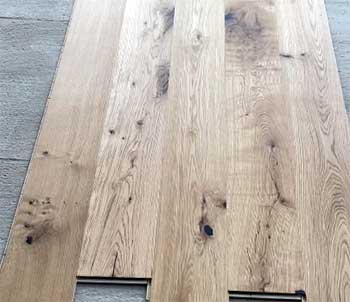
- Quality and Construction: This is where the price difference between the two brands becomes clear. Kahrs, a Swedish company, is credited with inventing the modern engineered hardwood floor back in 1941. Their entire reputation is built on precision engineering and impeccable quality control. Their multi-layer construction leads to an incredibly stable plank that resists warping and cupping in changing humidity. When you buy a box of Kahrs flooring, you expect every single board to be perfect. My experience with Bruce, especially at its lower price points, involved culling a fair number of boards due to milling or finishing issues. With Kahrs, you’re paying a premium to avoid that headache entirely.
- Design Philosophy: Bruce embodies the traditional American aesthetic. Its color palette is rich with reds, golds, and deep browns, and its finishes are typically a durable semi-gloss polyurethane. Kahrs is pure Scandinavian design. Think clean lines, muted and natural tones, and sophisticated matte or ultra-matte finishes that make the wood look as raw and organic as possible. Kahrs flooring often comes in wider and longer planks, which is a hallmark of high-end European design. If you’re aiming for a minimalist, modern, or “Japandi” style home, the Kahrs catalog will speak your language far more fluently than Bruce’s.
- Price and Value: There’s no contest here—Bruce is significantly more affordable. It’s designed to bring the real wood experience to the masses. Kahrs is a premium, luxury product. Its price per square foot can easily be double or triple that of a comparable Bruce floor. The value proposition is different. With Bruce, the value is in getting authentic hardwood on a budget. With Kahrs, the value is in design leadership, flawless craftsmanship, and long-term performance backed by a legacy of innovation.
Bruce Vs. Stuga Flooring: The DIY Project vs. The Curated Design Experience

This is an interesting comparison because Stuga is the primary US direct-to-consumer seller of floors made by… Kahrs. So while the product itself is the same premium European flooring, the buying experience and brand positioning create a unique choice for the modern homeowner.
- The Buying Process: This is the key difference. You buy Bruce flooring by driving to a big-box store, navigating a huge display, and loading pallets into your truck. You are presented with hundreds of options. Stuga operates entirely online with a highly curated, design-first approach. They offer a small, carefully selected collection of what they consider the most beautiful and timeless floors. Their website is clean, their branding is bright and friendly, and they focus on sending you large, beautiful samples so you can see the product in your own light. It’s a boutique experience versus a supermarket experience.
- Focus on the DIYer: While Bruce can certainly be a DIY project (I did it myself), the brand doesn’t specifically cater to this journey. Stuga, however, has built its entire identity around empowering the confident, design-savvy DIYer. Their products feature Kahrs’s user-friendly click-lock installation system, and their website is packed with tutorials, calculators, and support guides. They are selling not just a floor, but the vision and the confidence to install it yourself. They’ve simplified the process of acquiring a high-end European floor.
- Curation vs. Endless Choice: My journey with Bruce started with being overwhelmed by choice. There were so many shades of brown and so many different collections. Stuga solves this “paradox of choice.” They’ve done the curation for you. You’re not choosing from 50 shades of oak; you’re choosing from a dozen or so floors that a team of designers has pre-selected for their beauty and versatility. For someone who trusts a designer’s eye and wants to avoid decision fatigue, Stuga’s model is incredibly appealing. For the homeowner who wants to personally sift through every possible option to find a very specific look, Bruce’s massive catalog is the better playground.
Frequently Asked Questions (FAQ)
Absolutely, Bruce is a solid choice. With over a century in the game, they’ve earned their stripes as a trusted name. Their floors are durable, stylish, and budget-friendly, starting at $4 per square foot. I’ve had their Red Oak and Hydropel hickory for years, and they’ve held up beautifully. That said, quality control can be iffy, especially from big-box stores, so inspect your boards carefully. Compared to pricier brands like Carlisle, Bruce offers great value without sacrificing too much quality.
Bruce floors are built to last. Their solid hardwoods, like my Red Oak, can go 50 years or more with proper care, thanks to their ¾-inch thickness that allows multiple refinishes. Engineered options, like Hydropel, last 25-50 years, depending on the wear layer and maintenance. I’ve had mine for three years with minimal wear, even with kids and pets. Keep humidity between 35-55%, sweep regularly, and refinish every 7-10 years to keep them looking fresh.
Bruce offers several grades, from high-end to budget-friendly. Select grade is the cleanest, with minimal knots and uniform grain—perfect for a polished look. No. 1 Common has more knots and color variation, which I like for a rustic vibe. No. 2 Common, often called “cabin grade,” has more imperfections and is cheaper. My Gunstock oak was No. 1 Common, and the knots add character without looking cheap. Big-box stores often carry lower grades, so check the grade before buying.
It depends on your needs. Bruce is my pick for affordability and variety, with 300+ styles and prices starting at $4 per square foot. Shaw offers better warranties and sustainability, while Mohawk has trendier designs. Carlisle is tops for premium, long-lasting wide planks but costs more. Aurora’s great for budget shoppers but lacks Bruce’s range. For a balance of cost, durability, and classic style, Bruce is hard to beat, but explore samples from each to find your perfect fit.
Why Bruce Hardwood Flooring Is Your Best Bet?
After living with Bruce hardwood for years, I’m sold. It’s durable, gorgeous, and won’t drain your savings. From the cozy warmth of my Red Oak living room to the spill-proof Hydropel in my kitchen, Bruce has transformed my home without breaking the bank.
Sure, it’s got flaws—quality control can be hit-or-miss—but the pros outweigh the cons. If you want a floor that’s stylish, tough, and easy to maintain, Bruce is the way to go. Trust me, your feet (and your home) will thank you.
